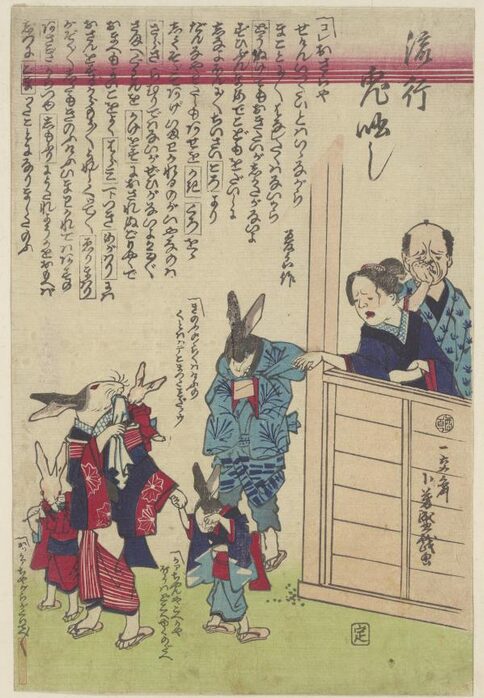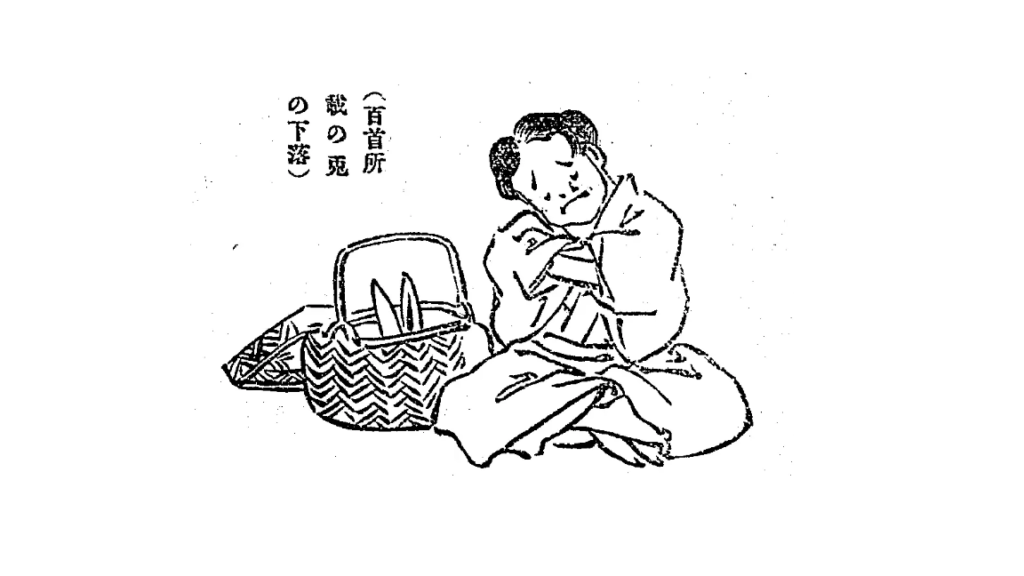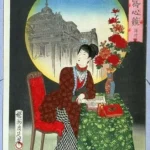When we think of rabbits today, we might imagine them as cute pets or gentle characters in pop culture. But in Japan’s modern history—from the Meiji to early Showa periods—there was a time when rabbits were the center of an intense boom.
This article gently explores the cultural background of this fascinating rabbit craze in early modern Japan.
When Did the Rabbit Boom Begin?
Rabbits began to be kept as pets around the time when Japan was becoming more urbanized in the Meiji period.
In particular, during the Maiji era, rabbits gained popularity in city households for reasons like:
- They’re quiet and don’t take up much space
- They don’t smell much
- They’re seen as lucky animals (“hopping = rising fortune”)
Their high fertility and auspicious image made them especially desirable.

The Rabbit Bubble
An article in Nichiyō Shimbun (June 1872) reports:
“Since last year, rabbits have become trendy, and their prices are soaring. Some say a rabbit with yellow fur on both ears was sold for 600 yen.”
Another article in Shinbun Zasshi says:
“While a pig costs 50–60 kin now, a rabbit has reached a price of 50 kin.”
According to the Chronological Table of Prices in Meiji, Taisho, and Showa, land in Ginza at that time cost only 5 yen per tsubo (3.3㎡), showing how expensive rabbits had become.
Male breeding rabbits with the prized sarasa (patterned) coat were sold for 200 to 300 yen—and in some cases, as much as 600 yen.
People began walking around with rabbits in wicker baskets, and public “Rabbit Shows” were held, complete with ranking charts like sumo wrestler lists.
The boom spread not just in Tokyo but across the country.
For example, Osaka issued a ban on rabbit markets in 1872, and newspapers mocked the craze as “fox possession.”
Rabbits were clearly more than just pets—they were financial assets.
The Rabbit Tax and the End of the Boom
To control the mania, Tokyo imposed a heavy tax:
“1 yen per rabbit, per month.”
This tax was equivalent to about three months of food.
As a result, people gave up their rabbits—selling them, hiding them, or releasing them into the wild.
The tax was lifted in 1879, but by the spring of 1880, the boom had quietly faded away.

Rabbits in Pop Culture
Retro comics and storybooks in early Showa Japan sometimes feature rabbit characters.
Even today, characters like Usagi Tsukino in Sailor Moon reflect how rabbits remain culturally beloved in Japan.
Conclusion
Quiet, soft, and just a bit mysterious—rabbits were once the stars of a true urban craze.
This blog will continue exploring the little cultural booms and everyday beauty found in Meiji and Taisho Japan.
References
- Tokyo Metropolitan Library Archive
- Mitsuo Akada, A Cultural History of Rabbits in Japan
- Ota Memorial Museum of Art
- Chronological Table of Prices: Meiji–Taisho–Showa, Weekly Asahi
- Goichi Yumoto, Illustrated Origins of Meiji-Era Objects
- Ishii, Kendō. Origins of Things in the Meiji Era. Tokyo: Heibonsha, 1908.
💬 Have you ever heard of Japan’s rabbit boom before?
Let me know what you think in the comments—or share your favorite rabbit-related stories!
📩 Want more glimpses into everyday life and unique trends in Meiji and Taisho Japan?
Follow this blog or subscribe for new posts!

Comment